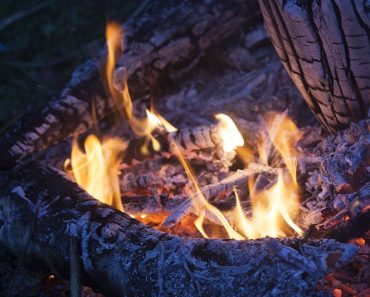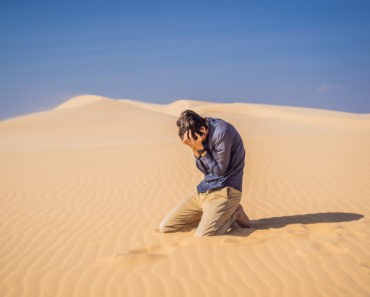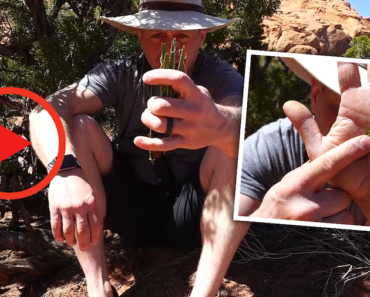Unlike the fictional character Robinson Crusoe from Daniel Defoe’s novel published in 1719, Alexander Selkirk wasn’t English, he was a young Scotsman. He wasn’t a plantation owner; he was a privateer, a navigator. He didn’t fight any natives, but he did hide from the Spanish. He didn’t enslave or name any natives either. He wasn’t even shipwrecked. But he did get stuck on an island and fend for himself for more than four years, but it was in the Pacific, not the Atlantic. And he did read the bible, eat goats, and have cats to keep him company as well. But one shouldn’t compare Selkirk to Crusoe at all. They should compare Crusoe to Selkirk, because Selkirk was the inspiration for Defoe’s character, not the other way around. (Wikipedia, Robinson Crusoe, 2024)
In 1704, the unruly young privateer was marooned on an uninhabited island of a group called the Juan Fernández Islands in the South Pacific off the coast of what is now Chile. It was the second largest island in the chain and known as Más a Tierra or ‘Closer to Land’ in Spanish. (Wikipedia, Alexander Selkirk, 2024) Today it is known as Robinson Crusoe Island or ‘Isla Róbinson Crusoe’ after the fictional character. It should be named after Selkirk.
When his captain left the island, Selkirk was left behind as punishment for a disagreement with his captain over the seaworthiness of their ship, and to make an example of him for going against Captain Thomas Stradling. The ship had been leaking, forcing the crew to pump water from the bilge day and night.
It was quite understandable that they were concerned for their lives, a third of the crew had already perished, and the crew were hungry, sick, and clothed in tatters. Of 63 crewmen, only 42 men remained. Selkirk wasn’t wrong about the less than seaworthy condition of their worm-eaten vessel, the Cinque Ports, either. After marooning him on Más a Tierra, the ship went on to founder off Malpelo Island, 250 miles from present day Columbia, stranding captain and crew on an island with little to offer the way of shelter, food, or water, arguably worse off than Selkirk. Captain Stradling and the surviving crew members were captured by the Spanish. (Wikipedia, Cinque Ports (Ship), 2023)
If that was not enough, the captain in overall command of the 2-ship expedition, William Dampier, had led the men on dangerous forays and then changed his mind when it came time to fight. He also prevented the men from rummaging captured ships for badly needed supplies and clothing, likely taking bribes from their captains not to do so.
When the Cinque Ports stopped at Juan Fernández, the crew was on the verge of munity. The crew put ashore stranding Captain Stradling aboard the vessel with the ship’s monkey. Dampier arrived and patched things up. The crew put ashore to careen the vessel, make repairs, nurse the sick back to health and resupply. By the time the Cinque Ports was ready to sail, Selkirk begged forgiveness of Stradling, promised compliance and asked to be allowed to continue the journey, but the young, arrogant “gentleman” Stradling refused. Selkirk was marooned. (Souhami, 2001)
Selkirk’s Survival Ordeal
Famously, Selkirk defied the odds, surviving four years and four months until he was rescued by an expedition under the command of Woodes Rodgers, but which included Dampier.
Selkirk wasn’t put ashore with nothing. He had his sea chest, clothing, bedding, pistol, musket, powder, lead, a flask of rum, two pounds of tobacco, his navigational instruments, his charts, a knife, a hatchet, a bible, a prayer book, and a pot … but only three meals worth of food.
Sailors released goats and pigs and sewed garden seeds onto islands where they would stop to careen and repair ships and resupply. On these stops, parties would cut lumber, restock water, food, wood, and oil. Fortunately, this was such an island.
Lessons Learned
Here are a few lessons to learn from Alexander Selkirk’s survival ordeal.
“Get Off The ‘X’!”
Selkirk constructed a bugout location in the interior of the island where he could hole up when Spanish ships put ashore. At one point, a Spaniard stopped and urinated at the base of the very tree that Selkirk was hiding in, but he was never captured.
Make Tools & Shelter
Selkirk made the tool that he lacked but needed to survive. He carved and fire-hardened a spade, hollowed bowls, and casks, built a stove, a meat larder, and a mortar and pestle. He also carved cutlery out of goat horn and used a cudgel for hunting goats.
From the metal, he forged an axe, knife blades, fishhooks, and even a punch which he used to set “wooden nails” or pegs.
Selkirk was far from the first man to be marooned on Más a Tierra. Dampier led a party that rescued a Miskito Indian 20 year previous, and their own expedition marooned a party of men on the island, which they picked up during the same stop during which Selkirk was deposited. It might sound to us like a revolving door of marooned sailors, but years could pass between visits from ships and a marooned sailor couldn’t just hop on any ship. The French or the Spanish would hunt them and kill or enslave them if they succeeded in catching them.
Previous visitors constructed a hut of sandalwood on the beach with a thatched roof and a stone hearth. Selkirk probably used the existing shelter but also constructed at least one additional shelter in the island’s interior, constructing a stone hearth and building a stone wall.
Scavenge Supplies
In addition to his sea chest and the supplies he put ashore with, Selkirk also scavenged food and supplies, such as metal and rope from the beach, and stone. He also cured leather and carved horn from the goats he hunted.
Food Procurement
Selkirk hunted goats and seals and gathered turtles and lobsters. He fished and gathered edible plants including turnips, watercress, and a plant native to the island that the sailors called “cabbage palm”.
More than one plant has been given the common name cabbage palm. The plant that Selkirk and the other sailors ate on Más a Tierra was Sonchus brassicifolius. Unsurprisingly, is not a palm at all. It is in the daisy and sunflower family and is pollinated by hummingbirds.
It was eaten boiled, and the men claimed it was as good as any cabbage back home. Unfortunately, the goats have now eaten most of these plants and they are now critically endangered, so you probably won’t get to try the cabbage palm yourself. (Wikipedia, Sonchus brassicifolius, 2023)
Prevent Illness by Practicing Sound Hygiene, Cooking Food, and Boiling Drinking Water
Early on, Selkirk experienced an illness that had both vomiting and diarrhea as symptoms until the thought he would surely die. Considering his diet, profound depression and accompanying lack of hygiene in relieving himself and preparing food, this was almost certainly an intestinal infection such as E. coli, Salmonella, Vibrio parahaemolyticus, or possibly Campylobacter jejuni from drinking untreated water.
Simultaneous vomiting and diarrhea are not symptoms you want to experience in town, much less stranded on an uninhabited island. They result in rapid dehydration, which is a terrible way to die even when it is not accompanied by severe illness.
Luckily for Selkirk, he survived. The lesson here is simply to cook your food, boil your drinking water, and practice proper hygiene. Relieve yourself in a latrine far from your water supply and wash your hands before preparing food or eating. No mystery here.
It is funny to me how so many Westerners think that a survival ordeal, expedition, or even a hunting or camping trip is an excuse to take a vacation from practicing the hygiene routines that keep them healthy. Indigenous peoples don’t do that because they’re already home.
The wilderness is our home too, it’s just probably been so many generations since our family lived there that it might as well seem another planet to some. But that’s easily fixed by changing how we see the natural world and by spending more time there.
Rats and Cats
Rats proved a nuisance to Selkirk, eating his food and disrupting his sleep. To mitigate their impact, he began feeding feral cats, which eventually provided his only companionship.
Survival Psychology
By the time he was rescued, Selkirk could scarcely string a sentence together, even though he read the Bible and prayer book and talked to himself to preserve both his language skills and his sanity. If he hadn’t had those books with him, he might not have made it until rescue.
Will the Miskito Pirate
In a related incident, a Miskito Indian Pirate (from the Mosquito Coast) named Will was marooned on the same island for three years and rescued by a party under the Dampier’s command on March 22nd, 1684. Dampier wrote of Will’s ordeal, and Will was likely the inspiration for Friday in Defoe’s book.
Lessons from Will’s Survival Ordeal
Unlike Selkirk, Will was not a Ship’s Master. He was put ashore with only his knife, gun, a small powder horn, and a few rounds of shot … no sea chest for Will.
Once his shot ran out, Will notched his knife, and used it to saw the barrel of his firearm into pieces, which he then forged into lances, harpoons, hooks, and a long knife, using the gun flint and barrel to start a fire. Dampier claimed Will had learned blacksmithing and how to temper metal tools from the time he had spent with the English.
Will survived on the same foods as Selkirk and was a skilled fisherman and hunter. Upon the arrival of his rescuers, he killed three goats and served them up English-style with “cabbage”.
During his three years on the island, Will was also spotted by Spanish shore parties but never captured. (Wikipedia, 2023)
Souhami, D. (2001). Selkirk’s Island. London: Weidenfeld & NIcholson.
Wikipedia. (2023, June 20). Cinque Ports (Ship). Retrieved from Wikipedia.com: https://en.wikipedia.org/wiki/Cinque_Ports_(1703_ship)
Wikipedia. (2023, August 5). Sonchus brassicifolius. Retrieved from wikipedia.com: https://en.wikipedia.org/wiki/Sonchus_brassicifolius
Wikipedia. (2023, October 12). Will. Retrieved from wikipedia.com: https://en.wikipedia.org/wiki/Will_(Indian)
Wikipedia. (2024, January 4). Alexander Selkirk. Retrieved from wikipedia.com: https://en.wikipedia.org/wiki/Alexander_Selkirk
Wikipedia. (2024, January 6). Robinson Crusoe. Retrieved from wikipedia.com: https://en.wikipedia.org/wiki/Robinson_Crusoe




























